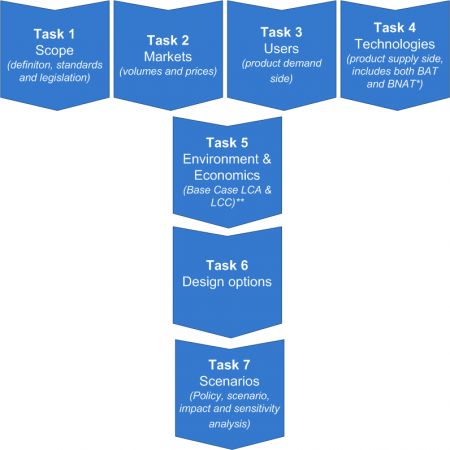Diese Studie wurde von PwC, Fraunhofer ISI und der Nationalen Technischen Universität Athen durchgeführt:
PwC ist als einer der weltweit führenden Berater in den Bereichen Energie, Nachhaltigkeit, Infrastrukturentwicklung und -umstrukturierung sowie Projektfinanzierung in allen Industriesektoren anerkannt und deckt das gesamte Spektrum an Dienstleistungen in den Bereichen Politik, Regulierung, Transaktionsdurchführung, Privatisierung und Integration ab. PwC arbeitet mit den wichtigsten Akteuren auf der ganzen Welt zusammen und unterstützt sie bei der Bewältigung der Herausforderungen und Chancen, die sich der Branche bieten, wie z. B. das Wachstum bei erneuerbaren und sauberen Energien, M&A-Prozesse in regulierten Unternehmen, die Verbesserung der betrieblichen Effizienz und Fragen im Zusammenhang mit dem Unternehmenswachstum. Mit mehr als 180.000 Fachleuten und Niederlassungen in 158 Ländern verfolgt PwC einen integrierten, multidisziplinären Ansatz, bei dem breit gefächerte Fachkompetenzen auf internationaler Ebene mit fundierten Kenntnissen der lokalen Märkte und spezifischen Erfahrungen in verschiedenen Branchen kombiniert werden. Im Energiesektor stützt sich PwC auf ein Netzwerk von über 4.000 Mitarbeitenden, die sich auf die Energiewirtschaft spezialisiert haben, sowie auf 12 Kompetenzzentren, die die wichtigsten Regionen weltweit abdecken und branchenspezifische Lösungen in den folgenden Bereichen anbieten:
- Prüfung: Prüfungs- und Buchhaltungsdienstleistungen
- Beratung: Beratungsleistungen zur strategischen Entwicklung von Unternehmen, um den Stakeholder Value zu steigern und die Unternehmensleistung zu maximieren; Unterstützung bei Fusionen und Übernahmen
- Steuern & Recht: Steuer- und Rechtsberatung.
Das Fraunhofer-Institut für System- und Innovationsforschung ISI analysiert die Entstehung und Auswirkungen von Innovationen. Wir erforschen die kurz- und langfristigen Entwicklungen von Innovationsprozessen und die Auswirkungen neuer Technologien und Dienstleistungen auf die Gesellschaft. Auf dieser Basis können den Auftraggebern aus Wirtschaft, Politik und Wissenschaft Handlungsempfehlungen und Perspektiven für wichtige Entscheidungen geben. Die Expertise des Fraunhofer ISI basiert auf wissenschaftlicher Kompetenz sowie einem interdisziplinären und systemischen Forschungsansatz.
ICCS-NTUA beteiligte sich an diesem Projekt durch sein Labor für Entscheidungsunterstützungssysteme EPU-NTUA in Zusammenarbeit mit Experten des Labors für Dampfkessel und thermische Anlagen der NTUA (LSBTP-NTUA). EPU-NTUA ist eine multidisziplinäre wissenschaftliche Einheit, die Forschungs- und Entwicklungsprojekte durchführt und Beratungsdienste auf hohem Niveau zu einem breiten Spektrum komplexer gesellschaftlicher und technischer Probleme anbietet. EPU-NTUA ist Teil der Fakultät für Elektro- und Computertechnik der Nationalen Technischen Universität Athen, der ältesten, renommiertesten und wettbewerbsfähigsten akademischen Einrichtung Griechenlands. LSBTP-NTUA hat in den letzten 30 Jahren an folgenden Themen gearbeitet: Messung und Standardisierung von Warmwasser- und Dampferzeugern, Untersuchung von Phänomenen, die den Verbrennungsprozess in Öfen von konventionellen und nicht-konventionellen Dampferzeugern beeinflussen und bestimmen, energetische Nutzung von geringwertigen Kohlen und anderen Brennstoffen schlechter Qualität, d.h. Biomasse und/oder Abfälle biogenen Ursprungs, dezentrale Energiesysteme, Power-to-Gas.
